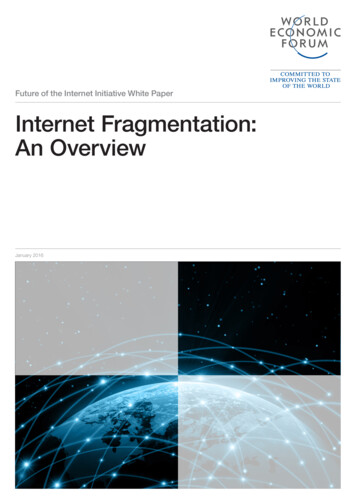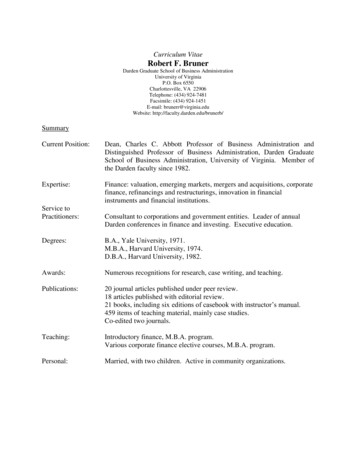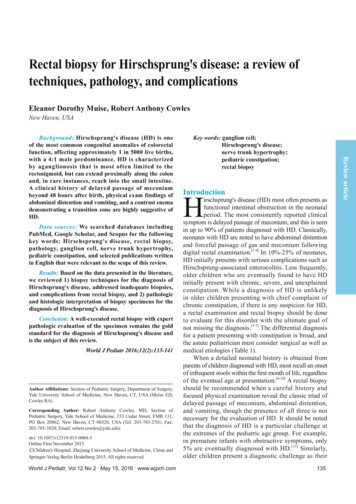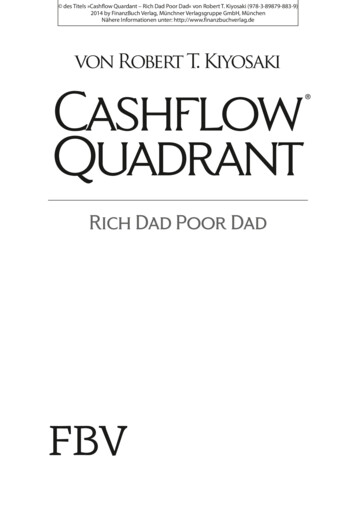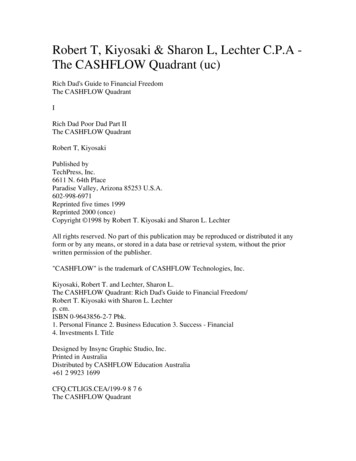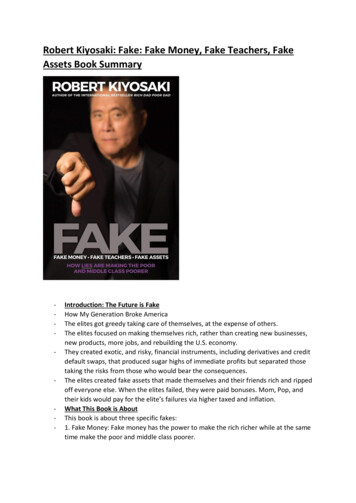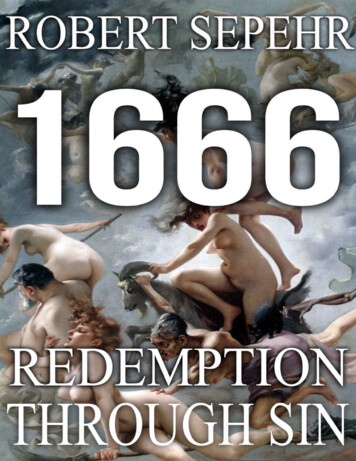
Transcription
1666REDEMPTIONTHROUGH SINRobert Sepehr
Copyright 2015 by Atlantean GardensAll rights reserved. This book or any portion thereof may not be reproducedor used in any manner whatsoever without the express written permission ofthe publisher except for the use of brief quotations in a book review.Printed in the United States of AmericaFirst Printing, 2015ISBN 978-1-943494-01-9Atlantean Gardens5334 Lindley Ave #133Encino, CA 91316www.AtlanteanGardens.org
Table of ContentsIntroductionChapter 1 - Sabbatai ZeviChapter 2 - Jacob FrankChapter 3 - Adam WeishauptChapter 4 - Lord RothschildChapter 5 - The IlluminatedChapter 6 - The Secrets of ZionChapter 7 - Ending the SwastikaChapter 8 - The Burnt OfferingBibliography
IntroductionMost people have heard of Jesus Christ, considered by Christianfollowers to be the Messiah who lived over 2000 years ago. Butvery few people have ever heard of Sabbatai Zevi, who declared himself tobe the Messiah in 1666. He amassed a following of over one millionbelievers, half the world’s Jewish population during the 17th century, byproclaiming that redemption was available through acts of sin.Considered a heretic by many of his contemporary Rabbis, nonetheless,his fame extended far and wide. Sabbatai’s adherents planned to abolishmany of the ritualistic observances, because, according to the Talmud, inthe Messianic time there would no longer be holy obligations. Fasting daysbecame days of feasting and rejoicing. Sexual promiscuity, adultery, incestand religious orgies were encouraged and practiced by Sabbateans.After Sabbati Zevi’s death in 1676, his philosophy would be continued,and expanded on, by his Kabbalist successor Jacob Frank. Frankism, areligious movement of the 18th and 19th centuries, centered on theleadership of the Messiah claimant Jacob Frank. He, like Zevi, wouldperform strange acts that violated traditional religious taboos, such as eatingfats that were forbidden by Jewish dietary laws, ritual sacrifice, promotingorgies and sexual immorality.Jacob Frank would eventually enter into an alliance formed by AdamWeishaupt and Meyer Amshel Rothschild called the Order of the Illuminati.The objectives of this organization was to undermine the world’s religionsand power structures, in an effort to usher in a utopian era of globalcommunism covertly ruled by their hidden hand: the New World Order.Using secret societies, such as the Freemasons, their agenda has playeditself out over the centuries, staying true to the script. Opposition is handledby a near total control of the world’s media, academic opinion leaders,politicians and finance. While still considered a conspiracy theory to many,
more people are waking up each day to the reality that this is not just atheory, but a true conspiracy.
Chapter 1In 1666, an exceptionally charismatic Rabbi and Kabbalist by the name ofSabbatai Zevi (1626-1676) declared himself to be the Messiah. Born to anaffluent family in Western Anatolia, he was a particularly eccentric mysticwho had attained a massive following of over one million devotees during hislifetime, roughly half of the world’s Jewish population in the 17th century.(1)His extraordinary popularity, according to historians such as ProfessorGershom Scholem, resulted largely from the publication and availability ofwhat is today called the Lurianic Kabbalah.(1) Named after Rabbi Isaac Luria(1534-1572), this new Kabbalah enjoyed broad dissemination thanks to theinvention of the printing press in the previous century. Jews around the worldfor the first time had access to occult literature about the deeper meaning oftheir faith and the popularity of Jewish mysticism soared. After a particularlyharsh period of persecution in European history, this pro-active Kabbalisticphilosophy, through an ancient mystical system, gave Jews a reason to beexcited and optimistic.Part of this system included ways of interpreting the supernaturalrelationship between events and time; often through letters and numbers. The‘magical’ emphasis given to the numerological value of dates contributedgreatly to the widely held expectations and hope placed on the coming of aMessiah at the time of Sabbatai Zevi’s advent the 18th day (6 6 6), of the6th month, of the year 1666. (1, 8)
FIGURE 1Zevi was extremely charming and exuded an inviting personality, asdocumented by those who knew him. According to an eyewitness, RabbiLeib ben Ozer:You must believe that this was how it was. I spoke with people whoate and drank and were near him, who were not proponents [ofSabbatai Zevi’s] and they told me that there was none like him instature and in the way his face looked, like that of one of God’sangels. And they testified that when he sang Sabbath hymns to God,which he did several times a day, it was not possible to look into hisface, for one who looked at it, it was as if he looked into fire. (1)Sabbatai Zevi was considered very handsome in appearance and alsopossessed an enchanting singing voice. Rabbi Leib ben Ozer goes on to
describe another phenomenon which added to belief in Zevi’s messianicclaim:And this is one of the greatest occurrences, clearly super-natural, thatcame to pass in those days and a reason for the great belief inSabbatai Zevi, for it happened in many places, that prophets arose inhundreds and thousands, women and men, boys and girls and evenlittle children; all of them prophesied in the holy tongue [Hebrew] andin the language of the Zohar as well, and none of them knew a letterof Hebrew and all the less so the [idiosyncratic] language of theZohar. (1)Many Rabbis of the time publicly attested to having had dreams in whichSabbatai appeared to them, sometimes by the side of their bed, and when theyawoke they would profess that he was the Messiah. According to professorGersham Sholem, a sincere expectation arose in the psyche of many Jews,especially in Europe following the Spanish Inquisition, that Biblical prophecywould be fulfilled via a Jewish homeland. (11)According to some critical interpretations of his behavior, Sabbataishowed signs of what modern scholars would likely call manic-depressivepsychosis. In other words, he publicly displayed at times ecstatic behavior,often followed by bouts of seclusion or possibly depression. He also violatednumerous religious laws, from dietary restrictions to committing acts ofsexual immorality. (1, 8, 11, 13)On the other hand, some scholars and modern day followers, or neoSabbateans, have argued that his behavior did not point to psychosis, butrather, was simply what one should expect from of a religious mystic, such asa Sufi: meditative chanting, prayer-trance, dancing, etc. According toprofessor Avraham Elqayam, faculty member of the Jewish PhilosophyDepartment at Bar-Ilan University in Israel, Sabbatai engaged frequently inBektashi Sufi rituals. This perspective seems reasonable to me, as SabbataiZevi’s final grave sight in Albania was made into a Sufi shrine, as it remainseven today. (5)In any event, Zevi’s unusual, or socially immoral and religiouslyunacceptable behavior finally got him expelled from Smyrna around 1650,and he wandered for years through Greece, Thrace, Egypt, and Syria. In 1665
his life forever changed upon meeting Nathan of Gaza in Palestine, the Rabbiwho persuaded him that he was indeed the Messiah to usher in a new age,and who would become known as one of his greatest proponents andinterpreters. Sabbatai Zevi was convinced and formally revealed himself afterconsiderable encouragement from Nathan, making his pronouncement in theyear 1666 as to fulfill Messianic prophecy. He soon gained fervent support inthe Diaspora (areas outside Palestine settled by Jews) by promising a returnto a Jewish homeland, a message that was then well received. (8, 11)Despite his strong support and popularity among the Jewish people, theleading Rabbis of Jerusalem rejected Sabbatai’s claim as Messiah. Theybasically told him to leave the city, or be excommunicated. Verydisappointed, but undeterred, Sabbatai returned to Turkey, where the Sultanof the Ottoman empire had already allowed the Zevi phenomenon to unfoldfor several years.(1,8,11) The Sultan did not initially oppose Zevi’s religiousclaims, probably because those claims brought in so much money fromJewish tourism, as Jews flocked to Turkey from from all over the world, fromEngland to Persia, Germany to Morocco, Poland to Yemen. (11)
FIGURE 2Though at first the Sultan did not interfere with Sabbatai’s movement, thelast straw came, according to one of many rumored accounts, when Sabbataipublicly proclaimed that, in next year, the Temple in Jerusalem would berebuilt. The Sultan took umbrage. The most commonly accepted version ofthe story is that the Sultan offered Sabbatai Zevi the choice of either publiclyconverting to Islam or being beheaded. As the Sultan so delicately put it:“Your head or the turban.”(11) The turban was, of course, a symbol forconverting to Islam. Sabbatai Zevi, the supposed long awaited Messiah,denounced his Jewish faith on the spot, and chose to wear the turban andkeep his head. Zevi publicly became a Muslim and adopted a new name:Aziz Mehmed Effendi (“Power of Muhammad”). The Sultan gave him areasonable salary as the Sultan’s personal doorman, and the cryptic title“Keeper of the Gate”. All the while, it seems he continued in his messianicactivities, acting with, one must assume, the full knowledge of the Islamicauthorities. (8)Sabbatai may have converted to escape execution, but Nathan and hisother loyal followers put a different interpretation on this transition.According to them, Sabbatai’s conversion represented the descent into theklippotic realm (“grossest” reality, or “husks” of creation) in order to reclaimthe lost ‘sparks’ of divine light, which is meant to ‘repair the world’. Theseare Kabbalistic concepts which most modern scholars have concluded wereall too often used to justify his heretical and socially radical behavior.(1,2,3,8,10,11,13,24,26,30)Sabbatai’s formal conversion to Islam dismayed many of his followers, tosay the least, but those who continued to be loyal to the movement took it asa sign to also convert to Islam, while secretly maintaining their Jewishidentity and mystical practices. The most famous of these Sabbatean cults, asthey were sometimes called, was primarily located in Anatolia (modernTurkey). Detractors called them the Donmeh, which translates to ‘religiousconverts’, a derogatory term which they themselves never used.(36)Nathan’s optimistic interpretation of Sabbatai’s change of faith did not sitwell with most Jews, but it did find a great degree of acceptance in places likeSpain and Portugal, among the ‘conversos’ (converts) and Marranos, twonames for western European Jews who were forced to convert to Christianityduring the Inquisition.
According to Reb Yakov Leib HaKohain, the current director of DonmehWest, a Californian neo-Sabbatean organization founded in 1972:It is commonly held conjecture that Sabbatai Zevi’s conversion toIslam was an act of cowardice that betrayed the Jewish people.However, this ‘conversion’ was not an act of cowardice, but in factone of the mystical ma’asim zarim (strange actions) that he andNathan of Gaza believed the Messiah was destined to perform, basedon their reading of the Kabbalah. (5)Such an unorthodox and controversial explanation suggests that thecollapse of Sabbatai Zevi’s world-wide movement, and almost of Judaismitself, resulted not so much from what Sabbatai did, as from the inability ofthe Jewish people to understand and accept it. In other words, it was notSabbatai Zevi who “betrayed” the Jewish people, but they whomisunderstood and, therefore according to Mr. HaKohain’s view, abandonedhim.(5)Sabbatai Zevi, like the Sufi mystics, used to loudly exclaim words ofecstasy. Sabbatai was said to have taken part in the Sufi Bektashi ritesconducted at Adrianopolis. In many ways the Sunni majority considers theBektashi Order and Alevis antinomian (“lawless”), so it is interesting thatSabbatai Zevi chose to affiliate with them.(3) In many regards, the BektashiAlevi Sufi fall beyond the limits of acceptable Muslim behavior. ManyBektashi-Alevi do not follow the prescribed five daily prayers, preferringinstead to offer their prayers privately or at Cem, the religious gathering placeof the Alevi. Nor do they adhere to fasting during Ramadan. Many BektashiAlevis drink alcohol and do not regard it as sinful, unlike the majorityorthodox belief.(4) They also emphasize the equality between men andwomen, who may practice together in the Cem and in Zikrullah (thegathering for Zikr). For the pilgrimage or Hajj to Mecca, they substitute apilgrimage to the shrines of Sufi saints, or visits to living Babas or Dedes,their religious elders and leaders.(4)The notion that Sabbatai held Sufism in high regard, and practiced it’sGnostic techniques, is one that professor Gersham Schalom seems to havefailed to notice, or adequately bring to light. The goal of this spiritualconversion, according to many modern Donmeh, was to bring about a sacred
reconciliation between two religions, rather than to practice either. The theoryis that one accomplished this by internalizing an opposing or “alien” religioninto one’s own person in order to reconcile inwardly what is outwardlyantagonistic, thereby reconciling two seemingly opposite systems and raisingup the ‘holy sparks’ in each to their source. (5, 11)But what are these ‘holy sparks’ and where did they come from? IsaacLuria, whose interpretation of the Kabbalah is now most widely used andaccepted, explained that God created the world by forming 10 vessels to holdthe ‘Divine Light’. God intended this original Light to radiate out, fill theworld and illuminate everything around us. But as God poured the Light intothe vessels, the Divine Light was so powerful that the vessels couldn’tcontain it. With a huge explosion, the vessels shattered and sparks of thisDivine Light became imbedded into the world
This book or any portion thereof may not be reproduced or used in any manner whatsoever without the express written permission of the publisher except for the use of brief quotations in a book review. Printed in the United States of America First Printing, 2015 ISBN 978-1-943494-01-9 Atlantean Gardens 5334 Lindley Ave #133 Encino, CA 91316 www.AtlanteanGardens.org. Table of Contents .



